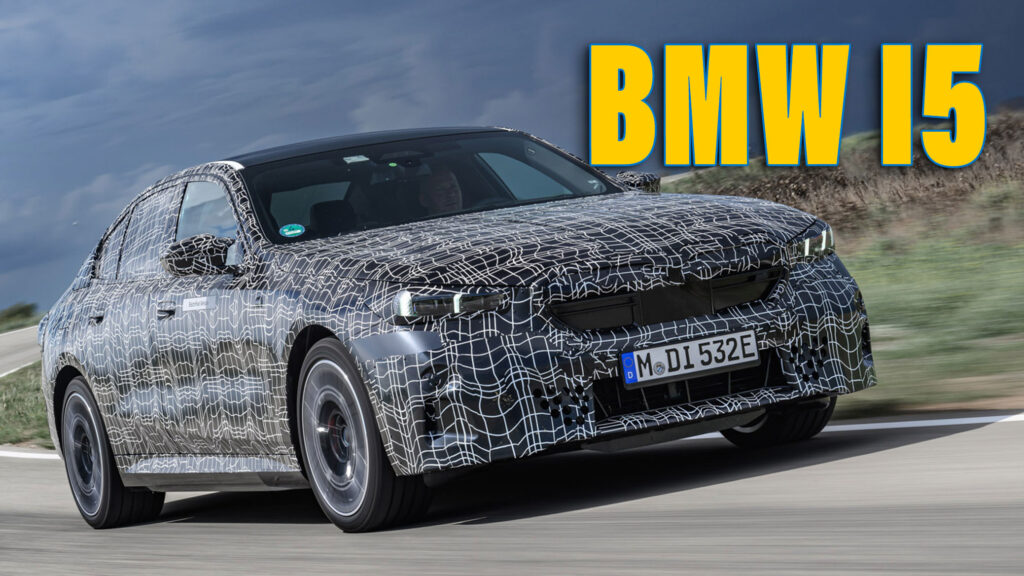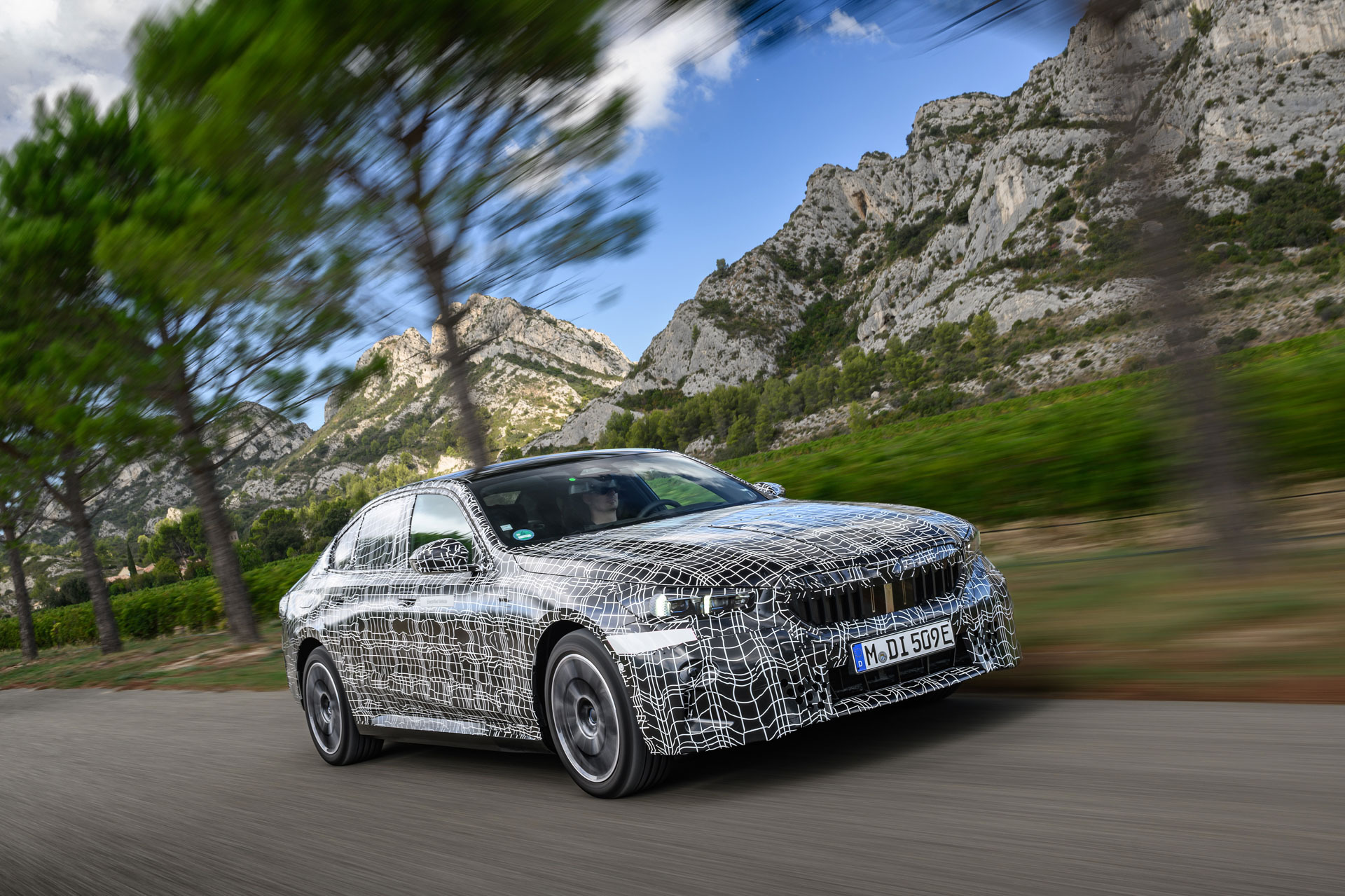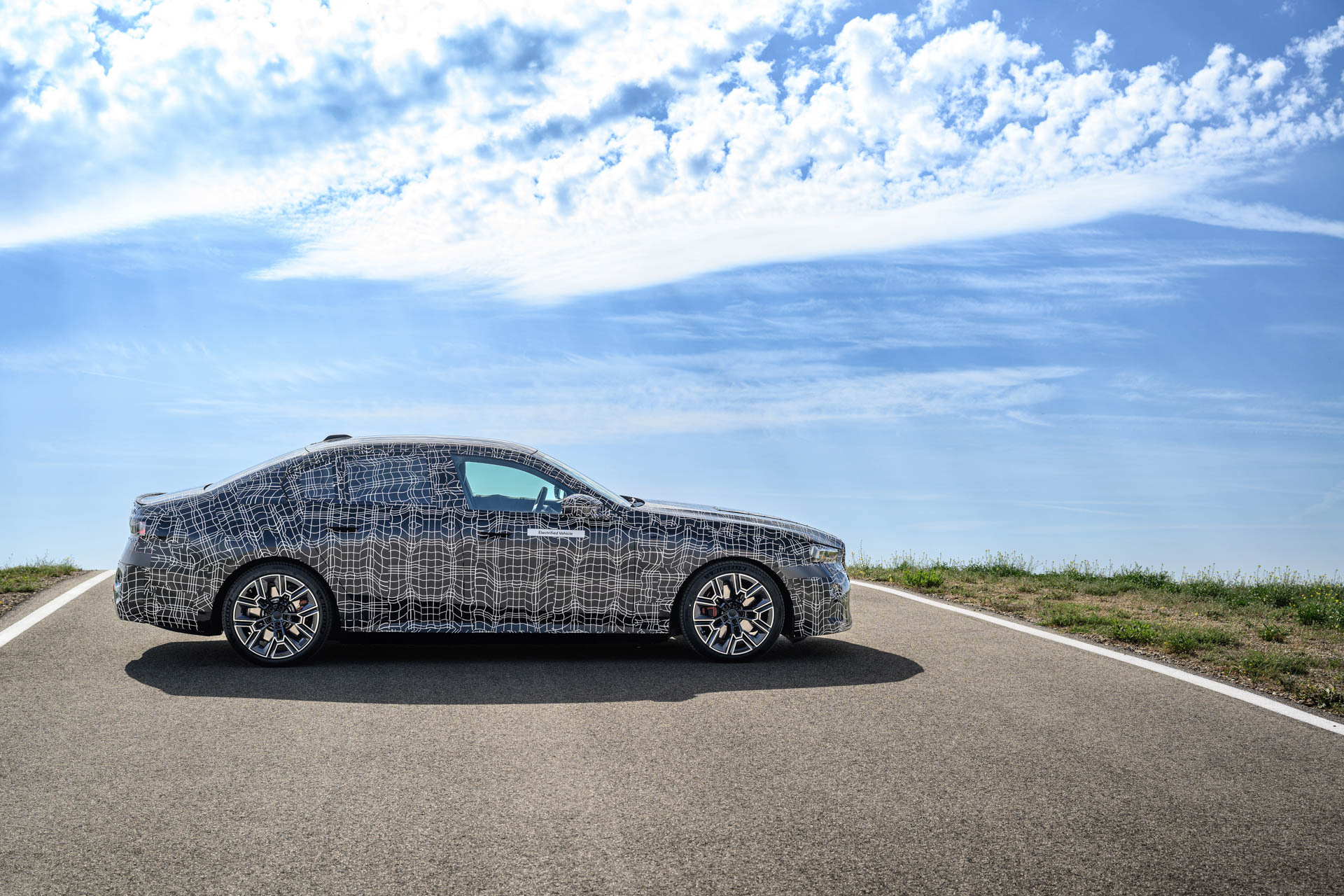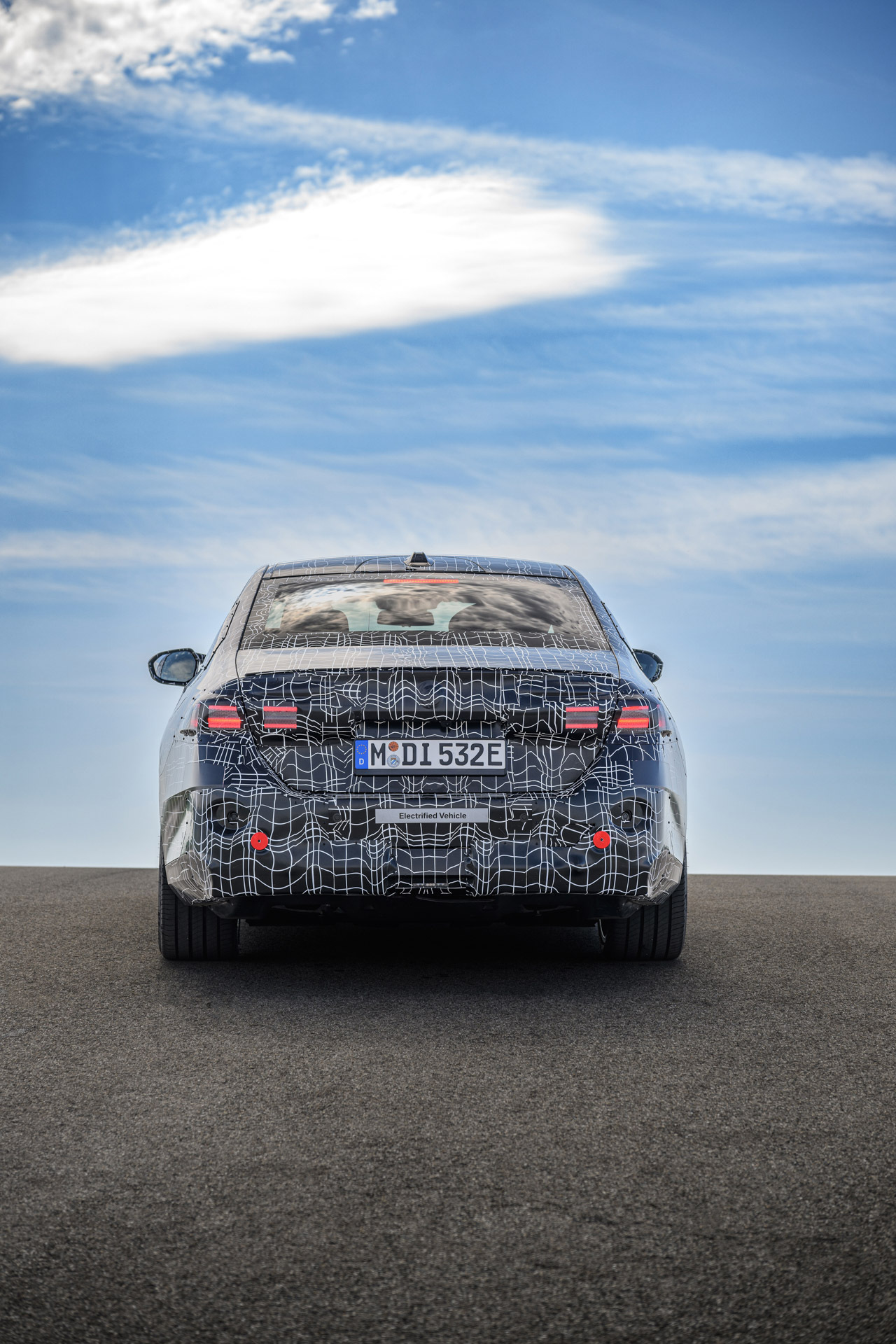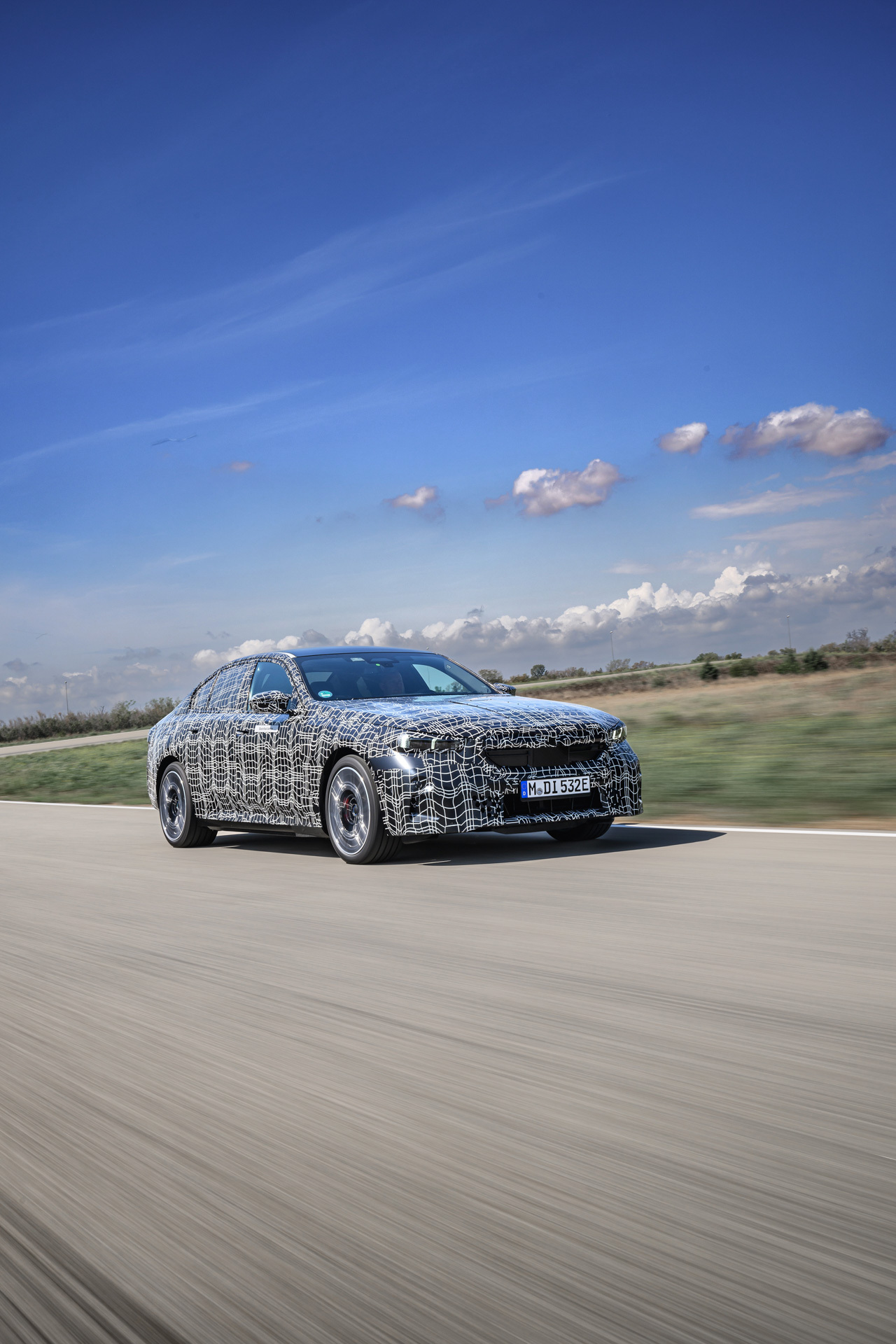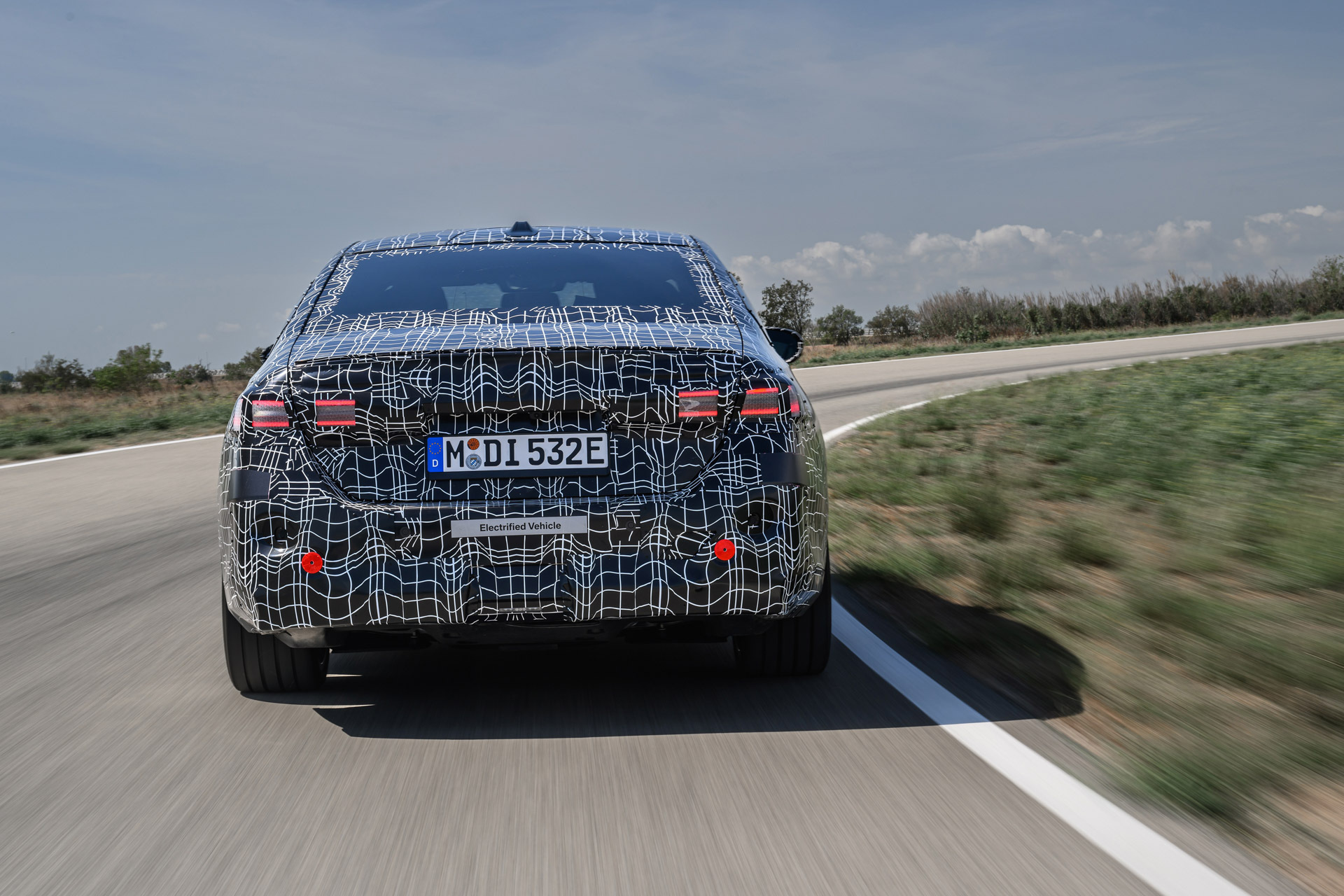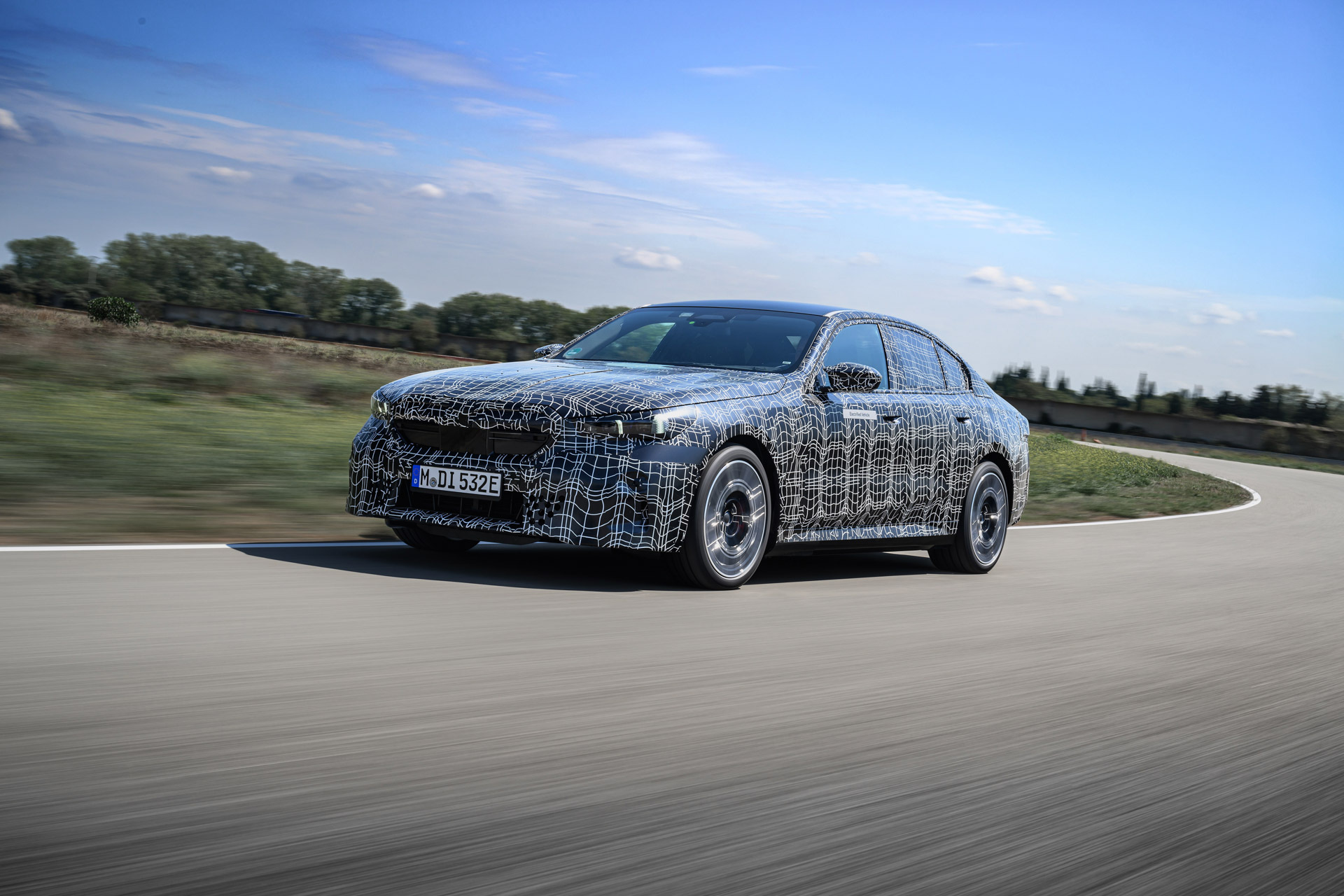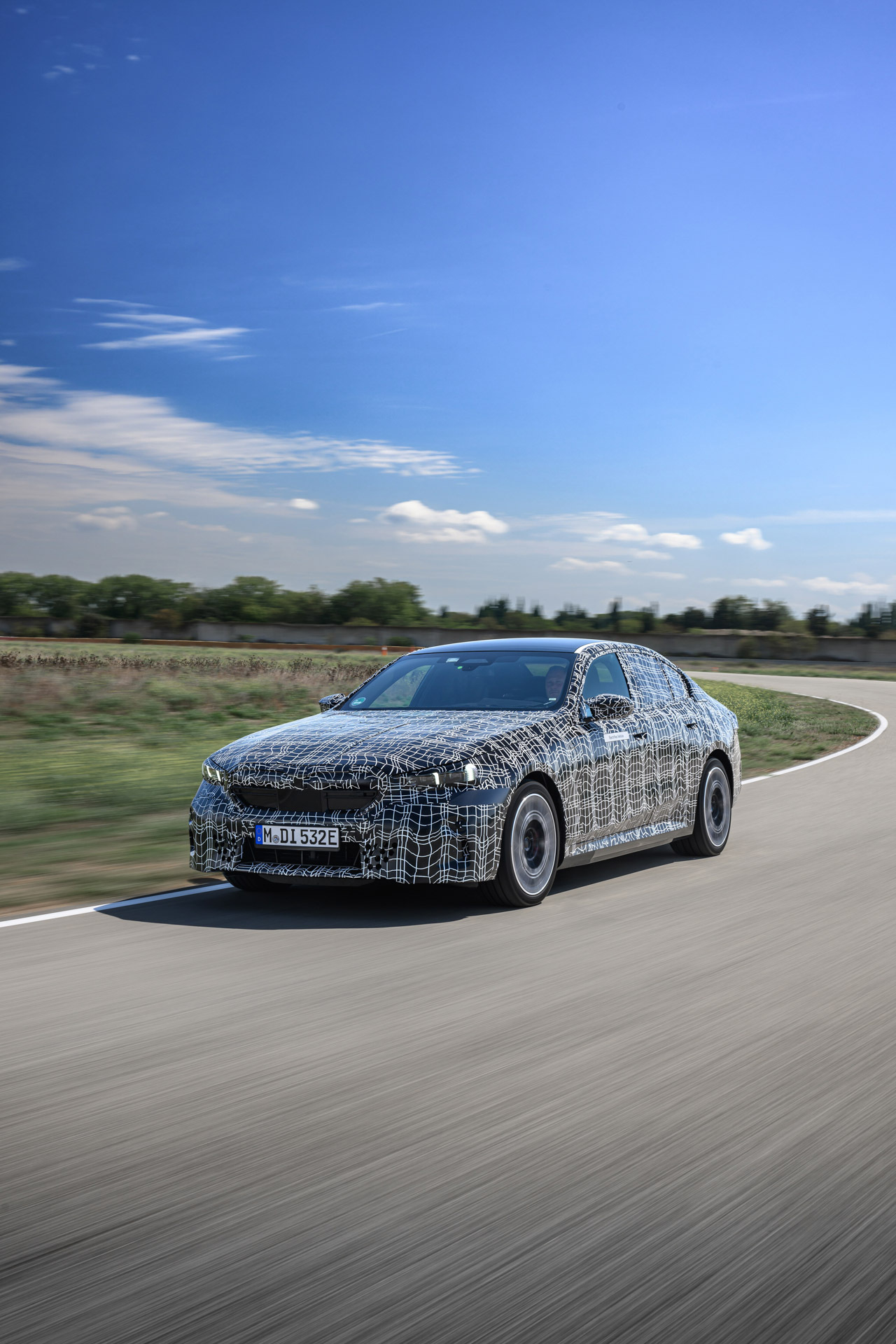The launch of the i5, the first all-electric 5-Series is a matter of weeks away, BMW has confirmed, and to whet out appetite it’s dropped a load of images of two distinct trim grades and clued us into some of the tech going on under the skin.
For those of us who like to drive, not be driven, the core piece of tech is a new, more sophisticated version of BMW’s adaptive damper suspension system that the automaker claims gives the i5 almost 7-Series levels of ride comfort, combined with the kind of agility you’d normally expect in a 3-Series. The clever bit appears not to be any amazing new piece of hardware, but how the shocks decide what kind of damping force to dish out and when.
More: BMW M Drifts A “Secret Prototype” That Definitely Isn’t The New i5 M50 / M60
In current BMW models the dampers rely on math models to work out what they should be doing next, but the new system crunches real data collected there and then from sensors monitoring things like wheel speed, steering angle, yaw rate and acceleration before sending instructions to the suspension. This Adaptive Suspension Professional system comes standard on the high performance all-wheel drive i5 M60 seen in the gallery immediately below, but you’ll need to pay extra for it on the rear-wheel drive i5 eDrive40 (bottom gallery) or you’ll end up with plain old passive dampers.
The system will also be available on the regular combustion 5-Series, which is essentially the same car minus the electric motor, and will be unveiled a few months after the i5. And BMW also acknowledges that having such a variety of drivetrain combinations means wide varieties in weight between models, so says each version gets its own chassis tune.
BMW also alludes to a standard heat pump that should help maximize the i5’s driving range, but the other key tech mentioned is the EV’s autonomous driving feature, part of the Driving Assistant Professional and Highway Assistant package, and something we’ve already seen on the new i7. It’s a Level 2+ system rather than a more sophisticated Lidar-based Level 3 system that BMW has promised will come to the 7-Series later this year, so still requires you to pay attention to the road, and a face-monitoring camera makes sure you do. But it does allow you to fully remove your hands at speeds of up to 81 mph (130 kmh).
What makes the i5’s version unique is that looking in the rear-view mirror will prompt the car to change lanes, which might prove annoying for those of us who like to check our mirrors regularly, rather than only when we change lanes, which is hopefully all of us. Alternatively, you can change lane by tapping the turn signal, as on the i7. This Level 2+ system is available in North America and Germany, and again, it will be shared with the combustion 5-Series that arrives later.




